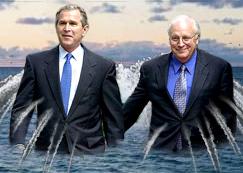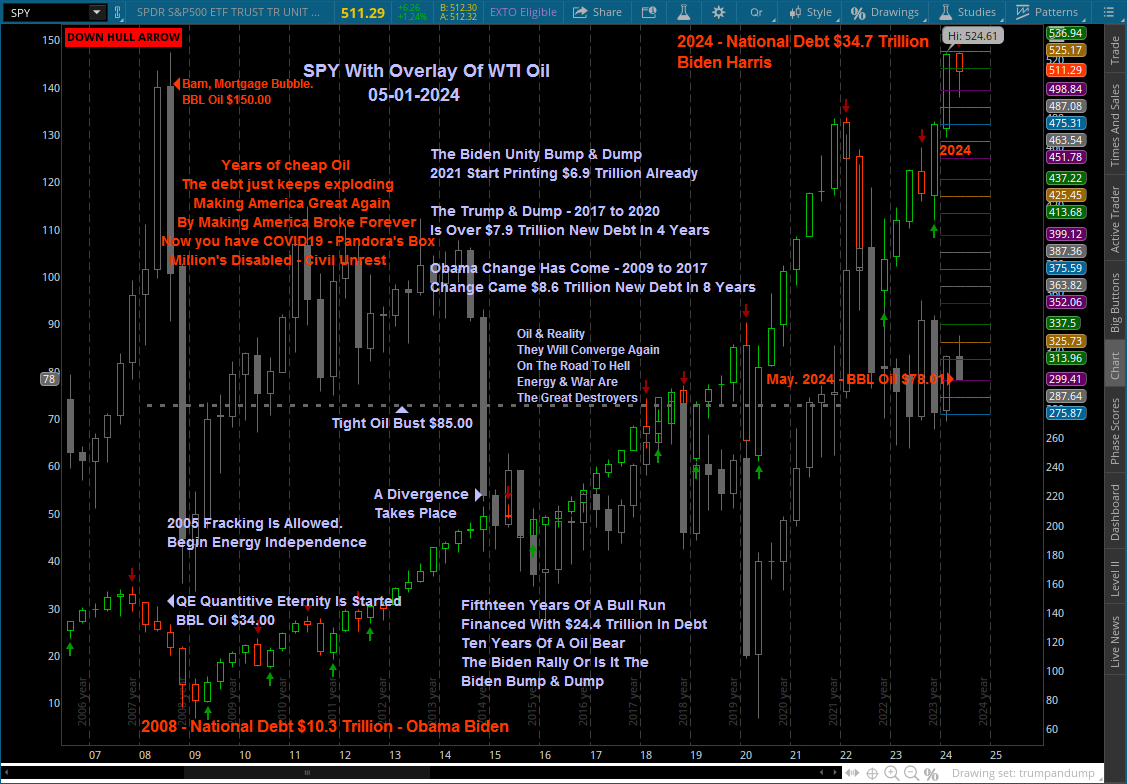You Are On Search Shale (Tight) Oil Play's - The Real Game Changer Boom Or Bust Page
Former Vice President Dick Cheney, who previously served as Halliburton’s CEO, was instrumental in getting the so-called
‘Halliburton Loophole’ inserted deep within the pages of "The Infamous 2005 Energy Bill". This loophole stripped the EPA of its regulatory
oversight of hydraulic fracturing in natural gas development, a technique pioneered by Halliburton.
In 2005, the oil and gas industry was granted an exemption from the Safe Drinking Water Act,
Allowing the injection of toxic fluids directly into groundwater without oversight by the U.S. Environmental Protection Agency (EPA).
| This Page's
Layout Guide L to R - Top To Bottom |
The Real Game Changer | Erle
P.Halliburton The Inventor |
|
| It's The
Water ! |
Act Of 1974 |
Frac Act |
Dick Cheney |
| John Hoeven |
Oil Prices |
Wall Street |
Depletion |
| Education | Hicks &
The NDIC |
Mortgage Bubble | Media Hype |
Return To Index Home Page - bakkenboomorbust.com
| The Real Game Changer You hear this all the time. What really changed the game! Return To Top Of Page |
| Hydraulic
Fracturing - Been Around Since 1940 |
Directional
Drilling
- Been Around Since 1920 |
Need for clarification. BOE (barrel of oil equivalent or as some put it a barrel of energy) Not a barrel BBL of oil.
Roughly 6000 Cubic Feet Of Natural Gas Nets 1 bbl of oil equivalent
Oh the games people play now Every night and every day now
Never meaning what they say now Never saying what they mean
The Games People Play
| It's The Water Return To Top Of Page |
2005 The Safe Drinking Water Act Is Changed

Under President Bush and Vice President Cheney, fracking was exempted from significant EPA regulation Hydraulic fracturing, an increasingly common aspect of the oil and
gas production process, is not subject to the same standards as other industries when it comes to protecting underground sources of drinking water Hydraulic fracturing
involves the injection of fluids including toxic chemicals into oil or gas wells at very high pressure Other forms of underground injection are regulated to protect drinking water,
but in 2005 Congress created exemptions for hydraulic fracturing to benefit Halliburton and other oil and gas companies
The Energy Policy Act Of 2005 - The Haliburton Loophole
| Energy Act Of 2005 Defined | Energy Policy Act Of 2005 - PDF Page 102, Section 322 |
Halliburton - 1996 |
Water Cant Harm Me!
Its What Is Put In The Water
| Water Act Of 1974 Return To Top Of Page |
Safe Drinking Water 1974
The 1974 act authorized EPA to regulate injection
wells in order to protect underground sources of drinking
water.
Congress amended the SDWA in 2005 to exclude hydraulic
fracturing, an industrial process for recovering oil and
natural gas from coverage under the UIC program.
This exclusion has been called the "Halliburton Loophole".
Halliburton is the world's largest provider of hydraulic
fracturing services.
The Fracturing Responsibility and Awareness of Chemicals
Act (H.R. 2766, S. 1215) would have repealed the exemption
for hydraulic fracturing in the SDWA
and regulated the oil and natural gas recovery process
under the UIC program. The bill did not pass.
| Was It The FRAC Act Return To Top Of Page |
FRAC Act
| Was It Dick Cheney Return To Top Of Page |
The Revolution
Still Not Regulated
| Was
It John Hoeven Return To Top Of Page |
Did He Invent This
Maybe He Did
Despite the rhetoric, the United States is highly unlikely to become energy independent unless rates of energy consumption are radically reduced.
The much-heralded reduction of oil imports in the past few years has in fact been just as much a story of reduced consumption, primarily related
to the Great Recession, as it has been a story of increased production. Crude oil production in the U.S. provides only 34 percent of current liquids
supply, with imports providing 42 percent (the balance is provided by natural gas liquids, refinery gains, and biofuels). In fact, the Energy
Information Administration (EIA) sees U.S. domestic crude oil production—even including tight oil (shale oil) peaking at 7.5 million
barrels per day (mbd) in 2019 (well below the all-time U.S. peak of 9.6 mbd in 1970), and by 2040 the share of domestically produced
crude oil is projected to be lower than it is today, at 32 percent. And yet, the media onslaught of a forthcoming energy bonanza persists.
Tight oil production has grown impressively and now makes up about 20 percent of U.S. oil production.
This has helped U.S. crude oil production reverse years of decline and grow 16 percent above its all-time post-1970 low in 2008.
More than 80 percent of tight oil production is from two unique plays: the Bakken in North Dakota and Montana
and the Eagle Ford in southern Texas. The remaining nineteen tight oil plays amount to less than 20 percent of total production,
Illustrating the fact that high-productivity tight oil plays are in fact quite rare.
Tight oil plays are characterized by high decline rates, and it is estimated that more than 6,000 wells (at a cost of $35 billion annually)
are required to maintain production, of which 1,542 wells annually (at a cost of $14 billion) are needed in the Eagle Ford and Bakken
plays alone to offset declines. As some shale wells produce substantial amounts of both gas and liquids, taken together shale gas and tight oil
require about 8,600 wells per year at a cost of over $48 billion to offset declines. Tight oil production is projected to grow substantially
from current levels to a peak in 2017 at 2.3 million barrels per day. At that point, all drilling locations will have been used in the
two largest plays (Bakken and Eagle Ford) and production will collapse back to 2012 levels by 2019, and to 0.7 million barrels per day by 2025.
In short, tight oil production from these plays will be a bubble of about ten years’ duration.
| Was
It Oil Price's Return To Top Of Page |
Price headed up in 2005. Price really headed north in 2007 and 2008.
Alot of players got in the game and alot of players got burned.
Things got rolling around 2005 - 2006 for drilling and fracking.
You have to have a price to support exploration of
Unconventional Oil
World oil market chronology from 2003 to 2016
S&P 500 - Overlaid With Oil

| Was
It Wall Street Return To Top Of Page |
It is interesting to note that while once the oil and gas industry exploited other regions of the globe.
To effect energy security for the U.S., it is now exploiting the U.S. to provide energy security to other regions, primarily Asia.
These economies will pay the highest price and thereby offer the most profitability to the individual corporations.
Shale & Wall Street
Is Wall Street Behind The Hype ?
| Was
It Depletion Return To Top Of Page |
Oil Depletion
| Was
It Our Education System Return To Top Of Page |
"We want to make sure as many people as possible benefit from this money," says Bruce Gjovig, director at The Center for Innovation at the University of North Dakota.
"This is a state with a great educational system and we now have the chance to raise it to the next level with this income.
This will really help our people. Like Norway has done." [12].
The oil company from Norway is in town. At least they know they are in tight oil, not shale oil.
The Shale Revolution
Could End Sooner Then You Think - Read The Second Page
| Was It The NDIC &
Mr. Hicks & page 3 of this presentation. Return To Top Of Page |
Hicks Presentation - dmr.nd.gov
| Was It The
Mortgage Bubble Bust Return To Top Of Page |
The timeline went from the housing bubble burst to the energy independence hype.
Shadow Inventory Of Homes
| Was It Media Hype Return To Top Of Page |
Selling Energy Independence
Media Hype
Its going to take alot of crude oil to make the USA energy independent.
We got about 10 million barrels to go.
In 2012, the U.S. completed 45,468 oil and gas wells and brought online 28,354 of them,
Compared with 3,921 wells completed in the rest of the world"
Leonardo Maugeri - Full PDF Report
As a investor one should always do due diligence to protect oneself.
Return To Index Home Page - bakkenboomorbust.com
Hydraulic Fracking - Going To Far
Hidden Beneath The Ground ?
To the fullest extent of the law, we will not be liable to any person or entity for the quality, accuracy, completeness, reliability, or timeliness of the information provided on this website,
or for any direct, indirect, consequential, incidental, special or punitive damages that may arise out of the use of information we provide to any person or entity
(including, but not limited to, lost profits, loss of opportunities, trading losses, and damages that may result from any inaccuracy or incompleteness of this information).
We encourage you to invest carefully and read investment information available at the websites of the SEC at http://www.sec.gov and FINRA at http://www.finra.org.
IF YOU DO NOT AGREE WITH THE
TERMS OF THIS DISCLAIMER, PLEASE EXIT THIS SITE
IMMEDIATELY. PLEASE BE ADVISED THAT YOUR CONTINUED
USE OF THIS SITE
OR THE INFORMATION
PROVIDED HEREIN SHALL INDICATE YOUR CONSENT AND AGREEMENT
TO THESE TERMS.

Honor - Respect - Freedom - Country